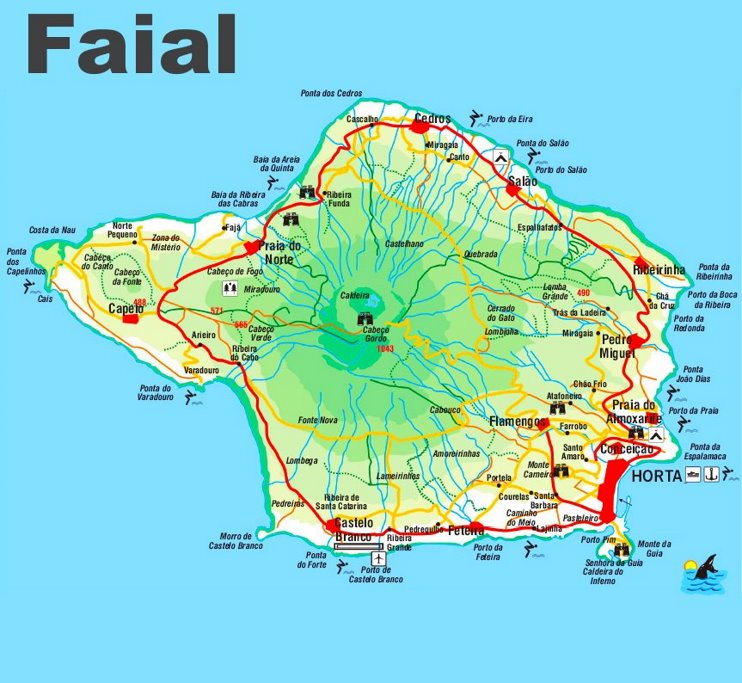Faial Island Map
Description:
This map shows towns, villages, main roads, secondary roads, points of interest, tourist attractions, and sightseeings on Faial Island.
About Faial Island
Faial Island, also known as "Blue Island" due to its numerous hydrangea hedges, is one of the nine islands in the Azores archipelago, Portugal. Located in the Central Group of the Azores, it covers an area of approximately 67 square miles (173 square kilometers) and has a population of about 15,000 inhabitants. The island was formed by volcanic activity and features a distinctive volcanic crater, Caldeira, which measures about 1.3 miles (2 kilometers) in diameter and 1,300 feet (400 meters) deep.
The island's main city and economic center is Horta, famous for its marina which is a crucial stopping point for yachts and sailboats crossing the Atlantic. The marina's walls are covered with paintings left by visiting sailors, creating a unique open-air gallery that has become a tradition since the mid-20th century. Peter Café Sport, established in 1918, serves as a legendary meeting point for sailors from around the world.
One of the island's most significant geological features is Capelinhos, the site of a volcanic eruption that occurred in 1957-58, adding about 2.4 square kilometers of new land to the island. The Capelinhos Volcano Interpretation Center now stands as an important educational and tourist attraction. Other notable locations include the Monte da Guia Special Ecological Area, Porto Pim Bay, and the 19th-century Ponta dos Capelinhos lighthouse.
The island's economy primarily relies on dairy farming, fishing, and tourism. Traditional activities include whale watching, diving, and hiking. The local cuisine is known for its fresh seafood, particularly the octopus dishes, and traditional cheese production.
Azores Islands: | São Miguel | Pico | Terceira | São Jorge | Flores | Santa Maria | Graciosa | Corvo
You may download, print or use the above map for educational, personal and non-commercial purposes. Attribution is required. For any website, blog, scientific research or e-book, you must place a hyperlink (to this page) with an attribution next to the image used.

